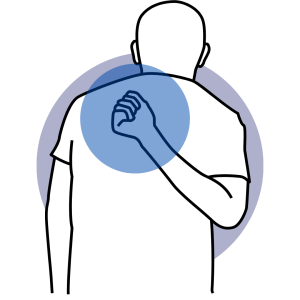
BACK HERNIA
The term “herniated disc” usually refers to a problem with the intervertebral discs in the spine. The correct medical term is disc herniation or disc prolapse, which usually occurs in the discs in the lower back or neck area. Intervertebral discs are structural components that hold the vertebrae together and act as a cushion between the vertebrae.
Causes:
Aging:
Discs can naturally wear out and weaken over time.
Genetic Factors:
Individuals with a family history of disc problems may be at risk of a herniated disc.
Overload and Stress:
Overload situations, such as physical activities or heavy lifting, can cause discs to strain and tear.
Sedentary Lifestyle:
Prolonged sitting or inactivity can negatively affect disc health.
Trauma or Accidents:
Accidents, falls or injuries can lead to damaged discs and herniated discs.
Non-Surgical Treatment Methods:
Rest:
It is important to rest the spine during periods of pain.
Physical Therapy:
Physiotherapist-led exercise programs aim to strengthen muscles, increase flexibility and correct posture.
Painkillers and Anti-Inflammatory Drugs:
Medicines recommended by the doctor can be used to relieve pain and control inflammation.
Physical Therapy and Exercise: Physiotherapist-led exercise programs can be used to strengthen muscles, increase flexibility and support the spine.
Massage and Hot and Cold Applications:
Massage therapy and hot and cold applications can help to relax muscle spasms and relieve pain.
Surgical Treatment Methods:
Discectomy:
Surgical removal of the disc contents can release the pinched nerve root.
Laminectomy:
A surgical procedure on the spinal bone involves the removal of tissues that compress the spinal cord or nerve roots.
Fusion:
A surgical procedure to fuse two vertebrae together.
Surgical intervention is usually considered when non-surgical treatment options do not respond or improve the condition. The treatment plan is determined depending on the patient’s condition, severity of symptoms and underlying causes.

